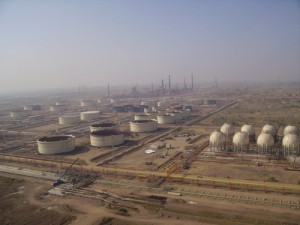U.S. refinery utilization rates increased to 91% in June compared to 90% in May, according to information supplied by the U.S. Energy Information Administration. U.S. crude production in June remained at about 8.7 million bpd with the rig count increasing for the first time in 23 weeks. In comparison, Platts reported on June 23 that China’s state-owned oil refiners planned on running their facilities at an average run rate of 80% nameplate capacity for the month of June.
As has been well reported in the trade press, the 8.7 million bpd of domestic U.S. crude production involves an increasing percentage of lighter crudes. Ironically, the increasingly lighter quality crude (42 °API gravity or higher) from LTO reservoirs, such as from the Permian basin, could cause major challenges for U.S. refiners, according to analyst Sarp Ozkan at Ponderosa Advisors, speaking at a recent Argus crude summit. Ozkan noted that the 2 million bpd of light crude coming from the Permian, and blended with crudes from other disparate locations, makes it difficult to control quality at Cushing, Oklahoma, the price settlement point used by the New York Mercantile Exchange. Crude quality variability leads to an increase in certain contaminants that can damage some refining equipment, such as corrosion in main fractionators overheads, etc.
The EIA noted earlier this summer that about 53% of the U.S. crude output this past spring had an API gravity above 40°, including those light crudes from the Permian, Eagle Ford and the Bakken. But many refiners, especially those processing heavy Canadian and Venezuelan crudes, have invested billions of dollars over the past 12 years in processing these much lower API gravity crudes, compelling several refiners to invest in crude processing units that can process these lighter crudes separately from the crude units configured with an atmospheric tower and crude vacuum tower for processing the heavier feeds.
Going into June, U.S. refiners processed about 16.4 million bpd, up by 211,000 bpd from the previous month. Meanwhile, the on-going refinery strike in France has flattened European refining utilization rates, after knocking off line as much as 900,000 bpd of refining capacity from eight shut down refineries, according to a June 28 Bloomberg report. This sudden shut down in refinery processing is filling up crude storage at Europe’s major terminals close to maximum capacity.
According to some analysts, this could open opportunities for U.S. refiners on the East Coast and Gulf Coast to increase refined product exports to Europe. However, until the turmoil with the Brexit referendum settles down, all bets are off that we will actually see higher volumes of Euro 4 or Euro 5 quality fuels being exported from the U.S. to France, or any other European terminal.








Leave a Reply
You must be logged in to post a comment.